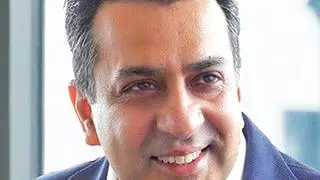The number of faulty base transceiver stations (BTSes) has reduced to nearly 290 from about 800 before the lockdown period, as telecom companies and the Department of Telecommunications (DoT) joined hands to ensure uninterrupted connectivity.
This was out of a total number of about 22 lakh BTSs in the country. Similarly, the number of optical fibre cable (OFC) cuts were reduced to about 19 from the 100 per day before the lockdown period, according to Cellular Operators’ Association of India (COAI) Director-General Rajan S Mathews.
A BTS is a piece of equipment that facilitates wireless communication between user equipment (such as mobile handsets, computers with wireless Internet connectivity) and a network.
The DoT had also instructed power companies to ensure stable and continuous power to cell towers to minimise logistical movements, he said, adding the department has assured the industry of its full support, especially during the Covid-19 lockdown, to ensure network uptime and quality of services.
DoT assistance
In a meeting on Monday, the Secretary and senior members of the DoT and the Director-General of COAI discussed the preparedness of the industry during the lockdown period.
The DoT also provided “substantial support” to meet the challenges of the increased traffic load on the networks and the logistical issues involved in maintaining the uptime of the networks. Assistance to request streaming video companies to reduce their content from high definition (HD) to standard definition (SD), setting up of single points of contact and operational centres in each licensed service area, among others, were provided.
The DoT also assured the industry that additional issues like the request for dynamic IP addresses, additional backhaul spectrum, relaxation in filing compliance requirements due to the extension of the quarantine period, clearance of pending network equipment type approvals (ETA), SIM activations, movement of essential goods would all be reviewed and decisions taken “expeditiously”.
During the meeting, the COAI also sought a reduction in license fees (LF) and spectrum usage charges (SUC) and modifications in the GST, where spectrum debt payments, LF and SUC payments would not be classified as ‘services’ and hence not attract GST. The DoT Secretary referred this to Member Finance, Mathews said.
Internet usage on the rise
India, which has one of the largest Internet user bases in the world with nearly 600 million subscribers, had registered a 25-30 per cent rise in data consumption in the initial days of lockdown.
“The increase is attributable largely to the increase in social media usage, Internet access to news coverage, online video streaming for mobile and work from home initiatives and OTT content. However, after the initial surge this has flattened out, and in some cases also dropped from the peak levels in the last few days. This is largely because of some of the initiatives taken by the overall industry ecosystem, like moving from HD to SD content by the OTT players for example,” Sathish Gopalaiah, Partner, Deloitte India said.
Even before the Covid-19 crisis, India had one of the highest data usages per subscriber at 10-11 GB per month.








Comments
Comments have to be in English, and in full sentences. They cannot be abusive or personal. Please abide by our community guidelines for posting your comments.
We have migrated to a new commenting platform. If you are already a registered user of TheHindu Businessline and logged in, you may continue to engage with our articles. If you do not have an account please register and login to post comments. Users can access their older comments by logging into their accounts on Vuukle.